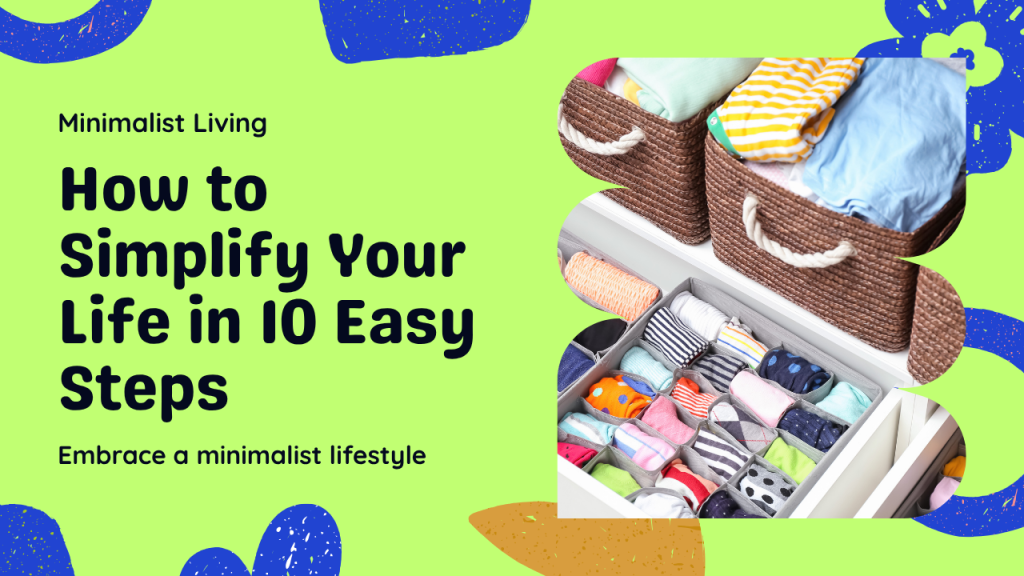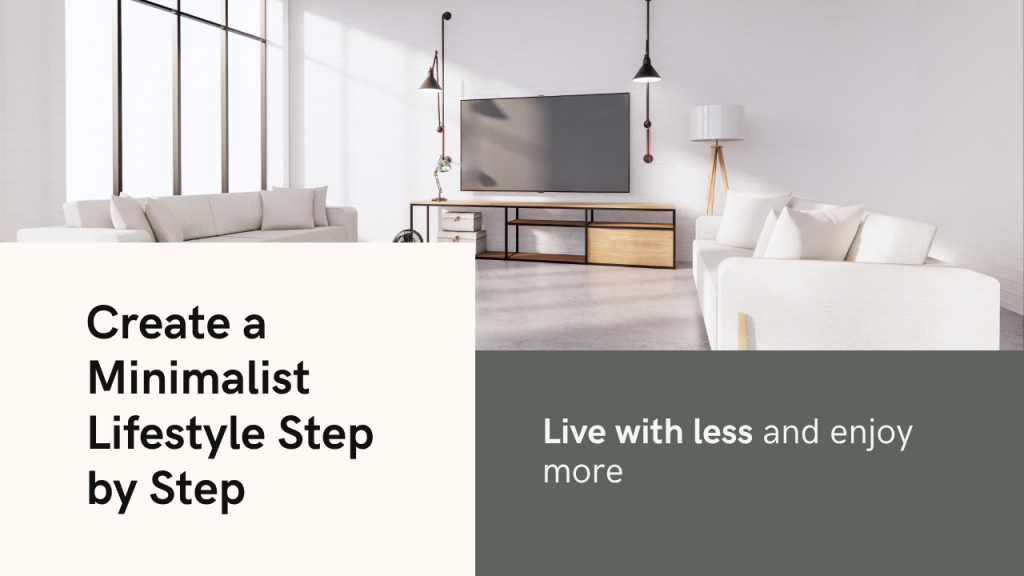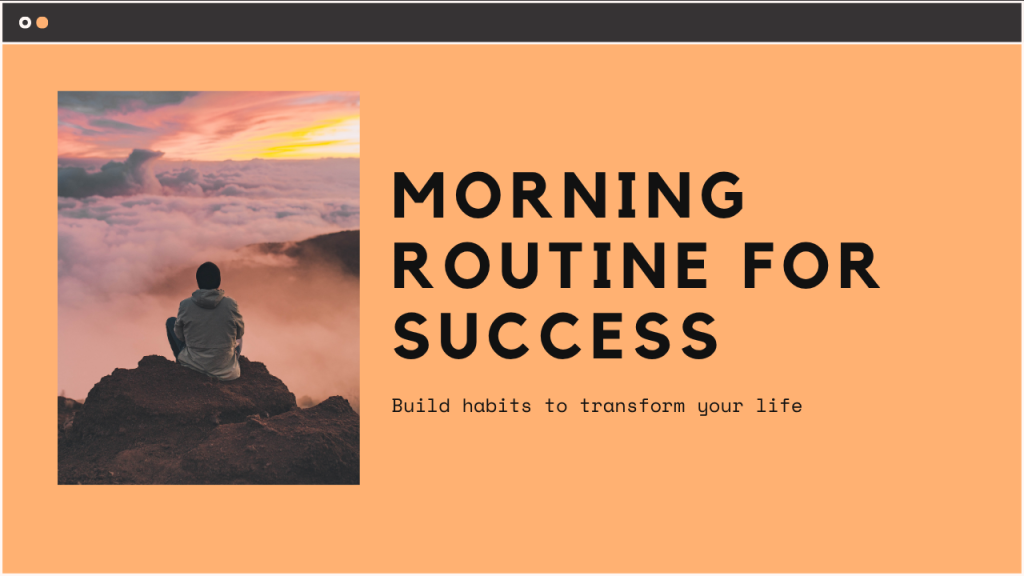Introduction: Why Embrace a Minimalist Lifestyle?
Minimalism isn’t just about white walls, tiny homes, or owning only 100 things. It’s a mindset — a conscious decision to focus on what truly matters by removing what doesn’t. In our consumer-driven culture, where more is often equated with better, minimalism flips the script. It asks:
What if having less actually gives you more — more time, more freedom, more peace?
Research from Princeton University shows that physical clutter competes for your attention, reducing focus and increasing stress. Likewise, cluttered schedules and digital lives drain energy.
If you’re tired of feeling overwhelmed, buried by stuff, or constantly busy but not fulfilled, minimalism offers a life-changing alternative.
In this step-by-step guide, you’ll learn exactly how to create a minimalist lifestyle, from decluttering your home to simplifying your mind and calendar. It’s a journey toward intentional living, where every item and commitment serves a purpose.
The Core Benefits of Minimalism
Before diving into how to get started, it’s worth seeing what’s on the other side.
Less stress: Fewer possessions mean fewer things to clean, maintain, insure, or repair.
More freedom: You’re not tied down by stuff or overspending, which gives you flexibility to travel, change careers, or relocate.
Improved focus: With less visual and mental clutter, your mind can zero in on what matters.
Financial health: Buying less means saving more, paying off debt, and building security.
A richer life: By stripping away excess, you have time and energy for people and experiences that truly bring joy.

How to Create a Minimalist Lifestyle Step by Step
Minimalism looks different for everyone. For some, it means living in a tiny house with a capsule wardrobe. For others, it’s simply having an organized home and a less chaotic schedule.
Follow these steps, adapting each to fit your life and goals.
1. Define Your “Why”
Minimalism without purpose is just decluttering. Get clear on what you hope to achieve.
Ask yourself:
- What feels overwhelming in my life right now?
- What do I wish I had more time or energy for?
- If I had fewer physical or mental burdens, how would life be better?
Write your answers down. Maybe your “why” is to have more time with family, to travel light, or to reduce anxiety. This becomes your compass when the process feels hard.
2. Declutter Your Physical Space Room by Room
Start Small to Build Momentum
Begin with an easy area, like a bathroom cabinet or a single drawer. Small wins build motivation.
The KonMari or “Does It Spark Joy?” Method
Hold each item. If it doesn’t spark joy or serve a real purpose, thank it (yes, it helps with letting go!) and donate or recycle it.
Try the Four-Box Method
Label boxes: Keep, Donate, Recycle, Trash. Systematically sort each area.
Move Through Your Home
- Clothes: Try the hanger trick — turn hangers backward and only flip them after wearing. After 3–6 months, donate what you never wore.
- Kitchen: Clear duplicates (do you really need 5 spatulas?).
- Books and décor: Keep favorites; let go of “someday” items.
- Sentimental items: Save these for last — you’ll have built decluttering muscles by then.
3. Simplify Your Digital Life
A minimalist lifestyle isn’t just about closets — it’s also your phone, inbox, and online world.
Inbox: Unsubscribe from emails that don’t add value. Aim for inbox zero weekly.
Photos: Delete duplicates and blurry shots. Back up meaningful pictures in organized folders.
Apps and Files: Remove unused apps. Sort files into a simple folder system. Consider a minimalist desktop with no icons.
Social media: Curate your feeds. Follow only accounts that educate, inspire, or truly connect.
4. Rethink Your Buying Habits
Decluttering once helps — but changing how you consume prevents clutter from returning.
Try these minimalist habits:
- The 30-Day Rule: Wait 30 days before buying non-essential items. Often, the urge passes.
- One In, One Out: For every new item, donate or discard one.
- Quality Over Quantity: Invest in fewer, better things that last.
5. Create a Minimalist Wardrobe
Fashion is a big clutter source. Consider building a capsule wardrobe — versatile pieces you love that mix and match easily.
Practical tips:
- Stick to a base color palette.
- Choose timeless over trendy.
- Keep accessories simple.
This reduces decision fatigue each morning and keeps closets tidy.
6. Simplify Your Schedule
Minimalism also means evaluating how you spend your time.
Ask:
- Which activities drain me?
- Which commitments don’t align with my goals?
Then:
- Learn to say no kindly but firmly.
- Block out unscheduled time for rest or creativity.
- Batch errands or work tasks to avoid time-wasting.
7. Practice Mindful Minimalism
A minimalist lifestyle is as much about the mind as your stuff.
Try These:
- Meditate daily, even if just 5 minutes.
- Journal about what you’re grateful for, keeping focus on abundance, not lack.
- Be present: Put your phone away during meals or conversations.
This fosters joy in simplicity.
8. Build Minimalist Financial Habits
Money stress is often tied to excess — buying too much, owning too much, maintaining too much.
Simple minimalist finance practices:
- Automate savings and bill payments.
- Track spending to identify waste.
- Focus spending on experiences over things.
9. Create Minimalist Routines
Routine simplifies life.
- Have a quick evening tidy-up routine.
- Prep meals in batches.
- Set phone “do not disturb” hours.
This reduces daily decision-making and chaos.

10. Embrace Minimalist Home Aesthetics (If You Want)
While minimalism is more about mindset than décor, many find calm in clean, open spaces.
Tips:
- Opt for neutral colors and natural materials.
- Let rooms “breathe” — don’t fill every wall or shelf.
- Use plants for warmth and life.
Common Myths About Minimalism
Myth 1: You must own almost nothing.
Reality: Minimalism is about intentional ownership. If you love your library of books or art supplies, keep them!
Myth 2: It’s boring or restrictive.
Minimalism frees you to spend more on meaningful things, whether that’s travel, hobbies, or quality tools.
Myth 3: It happens overnight.
It’s a gradual lifestyle change. Start small and keep going.
FAQs on Creating a Minimalist Lifestyle
Q: How long does it take to become minimalist?
It varies. Some spend a weekend doing a giant purge; for others, it’s months of slowly letting go.
Q: Will I miss my stuff?
Rarely. Most people report relief and wonder why they waited so long.
Q: Can families or kids live minimally?
Absolutely. It may look different, but teaching kids to value experiences over things is a lifelong gift.
Q: Isn’t it expensive to replace everything with minimalist versions?
Not at all. Minimalism usually means buying less. Focus on using what you have and replacing only as needed.
Conclusion: Living Minimalist, Living More Fully
Minimalism isn’t an end goal; it’s an ongoing practice of choosing what matters. Each item you let go of, each unnecessary commitment you release, creates space — physically, mentally, emotionally.
Imagine a home that’s peaceful to walk into, a schedule that gives you time for a sunset, a bank account that grows instead of shrinks. That’s the heart of minimalism: less clutter, more life.



